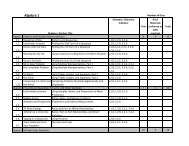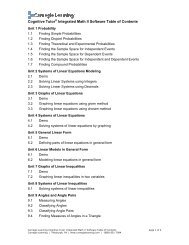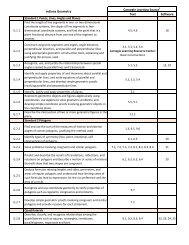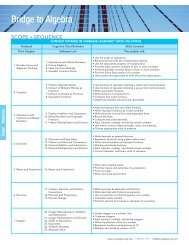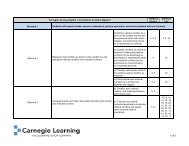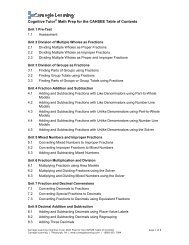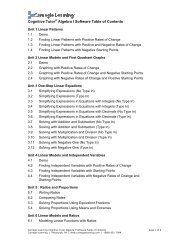GEORGIA MATHEMATICS 1 - Carnegie Learning
GEORGIA MATHEMATICS 1 - Carnegie Learning
GEORGIA MATHEMATICS 1 - Carnegie Learning
You also want an ePaper? Increase the reach of your titles
YUMPU automatically turns print PDFs into web optimized ePapers that Google loves.
End of Chapter Test PAGE 24. Create a graph of the quadratic function that models the diver’s path on the grid below.First, choose your bounds and intervals. Be sure to label your graph clearly including theline of symmetry and the vertex.Answers may vary. Sample answers are provided below.Variable quantity Lower bound Upper bound IntervalHorizontal distance –2 28 2Depth –28 2 2yA Diver’s Path3−2 2 4 6 8 12 14 16 18 22 24−2−4−6−8xDepth (feet)−10−12−14−16−18(10, −16)y = 0.16x 2 − 3.2x−20−22x = 10−24−26Horizontal distance (feet)5. What is the domain and range of the function in terms of the problem situation?Use complete sentences in your answer.Sample Answer: The domain is all real numbers from 0 to 20, and the range is all realnumbers from 0 to –16.© 2008 <strong>Carnegie</strong> <strong>Learning</strong>, Inc.6. Determine the x-intercepts of the graph. Interpret the meaning of the x-intercepts in theproblem situation. Use complete sentences in your answer.Sample Answer: The x-intercepts are 0 and 20. The intercepts indicate the points wherethe diver enters and exits the water. The intercept (20, 0) gives the horizontal distance thediver travels.238 Chapter 3 ■ Assessments Georgia Mathematics 1




